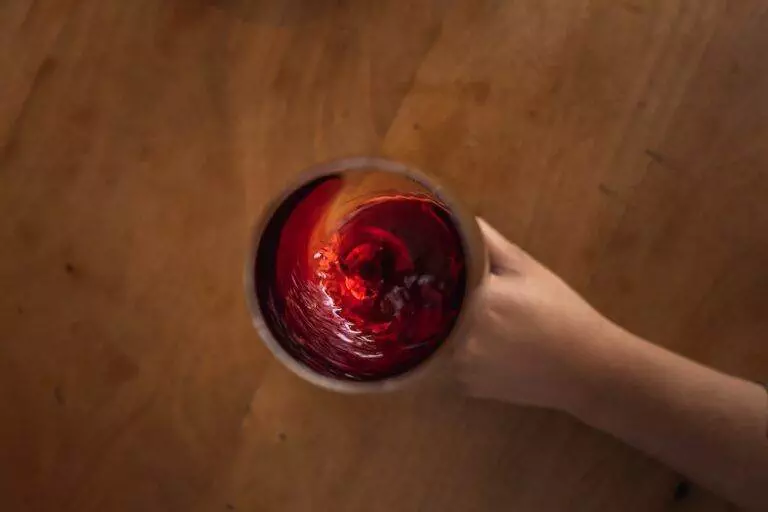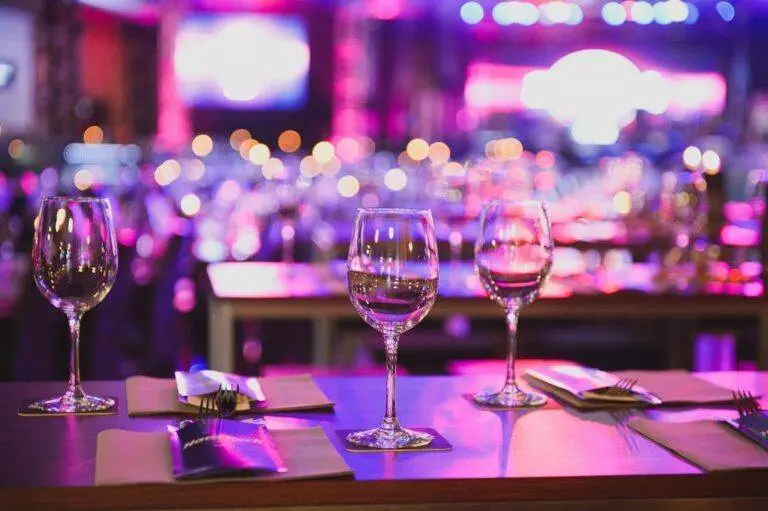Riesling: A versatile white wine known for its floral aromas and flavors of peach, apricot, and honey.
Riesling is a grape variety that has captured the hearts of wine lovers around the world. Known for its versatility, Riesling can produce wines that range from bone-dry to lusciously sweet, and everything in between. This grape variety is highly regarded for its ability to express terroir, making it a favorite among sommeliers and wine enthusiasts. In this article, we will explore the origins of Riesling, its flavor profile, the different styles it can produce, food pairing options, top regions for production, aging potential, sustainability practices, the role of terroir and winemaking techniques, and its place in wine culture.
The Origins of Riesling: A Grape with a Rich History
Riesling has a rich history that dates back centuries. It is believed to have originated in the Rhine region of Germany, where it has been cultivated since at least the 15th century. The name “Riesling” is thought to have come from the German word “riesen,” which means “to grow” or “to ripen.” This name reflects the grape’s ability to thrive in cool climates and produce high-quality wines.
Over time, Riesling spread beyond Germany and became popular in other wine regions around the world. It was brought to Austria in the 14th century and later made its way to France’s Alsace region. In the 19th century, German immigrants introduced Riesling to Australia and the United States. Today, Riesling is grown in many countries, including New Zealand, Canada, South Africa, and Chile.
Understanding the Flavor Profile of Riesling: From Floral to Fruity
Riesling is known for its aromatic qualities and wide range of flavors. It typically exhibits floral aromas such as jasmine, honeysuckle, and orange blossom. On the palate, Riesling can showcase flavors of green apple, peach, apricot, lime, and lemon. The level of sweetness can vary greatly, from bone-dry to intensely sweet.
The flavor profile of Riesling is influenced by climate and terroir. In cooler climates, Riesling tends to have higher acidity and more pronounced citrus flavors. In warmer climates, the wine can develop riper fruit flavors and a fuller body. The soil composition also plays a role in the flavor profile, with slate soils in Germany’s Mosel region contributing to the mineral character often found in Riesling.
The Many Styles of Riesling: Dry, Sweet, and Everything In Between
Riesling can be made in a variety of styles, ranging from bone-dry to lusciously sweet. The sweetness level is determined by the amount of residual sugar left in the wine after fermentation. Dry Rieslings have little to no residual sugar and are known for their crisp acidity and citrus flavors. Off-dry Rieslings have a touch of sweetness that balances the acidity and enhances the fruit flavors. Sweet Rieslings can be rich and honeyed, with intense fruit flavors and a luscious mouthfeel.
The style of Riesling can also vary between New World and Old World regions. New World Rieslings, such as those from Australia and the United States, tend to be riper and more fruit-forward. They often have higher alcohol levels and a fuller body. Old World Rieslings, particularly those from Germany and Alsace, are known for their elegance, purity of fruit, and pronounced acidity.
Riesling and Food Pairing: The Perfect Match for a Variety of Dishes
Riesling’s versatility makes it an excellent choice for food pairing. Its high acidity cuts through rich and fatty foods, while its fruit flavors complement a wide range of dishes. Dry Rieslings pair well with seafood, particularly shellfish, as well as salads, grilled vegetables, and light poultry dishes. Off-dry Rieslings are a great match for spicy Asian cuisine, as the touch of sweetness helps to balance the heat. Sweet Rieslings can be enjoyed on their own as a dessert wine or paired with fruit-based desserts, blue cheeses, and foie gras.
When pairing Riesling with food, it’s important to consider the sweetness level of the wine and the intensity of the dish. A dry Riesling may be overwhelmed by a heavily spiced dish, while a sweet Riesling may overpower a delicate seafood dish. It’s also worth noting that Riesling’s acidity can help to cleanse the palate between bites, making it a refreshing choice for multi-course meals.
The Best Regions for Riesling Production: From Germany to Australia

Riesling is grown in many regions around the world, but there are several that are particularly renowned for their production of this grape variety. Germany is considered the birthplace of Riesling and produces some of the finest examples. The Mosel region is known for its steep vineyards and slate soils, which contribute to the mineral character and vibrant acidity found in Mosel Rieslings. The Rheingau region produces more full-bodied and powerful Rieslings, while the Pfalz region is known for its dry and fruity styles.
Alsace in France is another top region for Riesling production. Here, Riesling is often made in a dry style and showcases intense fruit flavors and a rich texture. Australia’s Clare Valley and Eden Valley are known for their high-quality Rieslings, which exhibit ripe fruit flavors and a crisp acidity. In the United States, Washington State’s Columbia Valley and New York’s Finger Lakes region produce excellent Rieslings that range from bone-dry to off-dry.
The Aging Potential of Riesling: How to Cellar and Enjoy this Wine
Riesling has excellent aging potential, particularly the high-quality examples from Germany. The high acidity and sugar levels in Riesling act as natural preservatives, allowing the wine to develop complex flavors and aromas over time. Dry Rieslings can age for 10-15 years, while off-dry and sweet Rieslings can age for several decades.
To properly store and cellar Riesling, it’s important to keep the wine in a cool, dark place with a consistent temperature. The ideal temperature for aging Riesling is around 55°F (13°C). It’s also important to store the bottles horizontally to keep the cork moist and prevent oxidation. When opening an aged Riesling, it’s recommended to decant the wine to remove any sediment that may have formed.
Riesling and Sustainability: A Look at Eco-Friendly Production Methods
Sustainability is becoming increasingly important in the wine industry, and Riesling producers are no exception. Many wineries are adopting eco-friendly practices to minimize their impact on the environment and produce wines that are more in harmony with nature. These practices include organic and biodynamic farming, water conservation, renewable energy use, and biodiversity preservation.
Organic farming involves avoiding the use of synthetic pesticides and fertilizers, while biodynamic farming takes a holistic approach that considers the vineyard as a living organism. Both methods aim to promote soil health, biodiversity, and overall vineyard sustainability. By adopting these practices, wineries can enhance the flavor profile of their Rieslings and produce wines that are more expressive of their terroir.
The Role of Terroir in Riesling: How Soil and Climate Affect the Taste
Terroir plays a crucial role in shaping the flavor profile of Riesling. Soil composition, climate, and topography all contribute to the unique characteristics of the wine. In Germany’s Mosel region, the slate soils impart a distinct mineral character to the Rieslings, while the steep vineyards and cool climate contribute to the wine’s vibrant acidity. In Alsace, the clay and limestone soils produce Rieslings with more body and structure.
Climate also plays a significant role in Riesling production. Cool climates, such as those found in Germany and Alsace, allow the grapes to ripen slowly, resulting in wines with high acidity and vibrant fruit flavors. Warmer climates, such as Australia’s Clare Valley, can produce riper fruit flavors and a fuller body. The combination of soil and climate creates a unique expression of Riesling in each region.
Riesling and Winemaking Techniques: From Stainless Steel to Oak Barrels
Winemaking techniques can greatly influence the flavor profile of Riesling. Stainless steel fermentation is commonly used for producing dry and off-dry Rieslings, as it preserves the wine’s fresh fruit flavors and crisp acidity. This method allows the true expression of terroir to shine through.
Some winemakers choose to ferment Riesling in oak barrels, which can add complexity and texture to the wine. Oak aging can impart flavors of vanilla, spice, and toast, as well as a rounder mouthfeel. However, it’s important to use oak judiciously with Riesling, as it can easily overpower the delicate fruit flavors.
Riesling and Wine Culture: Why This Wine is Beloved by Sommeliers and Wine Enthusiasts Alike
Riesling has long been beloved by sommeliers and wine enthusiasts for its versatility, complexity, and ability to age gracefully. Its wide range of styles means there is a Riesling for every palate, from bone-dry to intensely sweet. The grape’s ability to express terroir makes it a favorite among sommeliers, who appreciate the diversity of flavors and aromas that Riesling can offer.
Wine enthusiasts are drawn to Riesling for its unique characteristics and ability to pair well with a variety of dishes. The grape’s high acidity and fruit flavors make it a refreshing choice for warm weather, while its aging potential allows for the enjoyment of older vintages. Riesling’s versatility and ability to reflect its terroir make it a wine that is constantly evolving and intriguing.
Riesling is a grape variety that has captivated wine lovers around the world with its versatility, complexity, and ability to express terroir. From its origins in Germany to its spread across the globe, Riesling has become an important player in the wine world. Its wide range of flavors and styles, from bone-dry to lusciously sweet, make it a favorite among sommeliers and wine enthusiasts alike. Whether enjoyed young or aged, Riesling offers a unique and ever-evolving experience that continues to delight wine lovers.
If you’re a fan of Riesling, you’ll love exploring the exquisite world of AXR Wines. This journey into taste and sophistication will take you on a sensory adventure, where you can discover the unique flavors and aromas that make Riesling so beloved. From floral notes to hints of peach, apricot, and honey, AXR Wines offers a range of exceptional Rieslings that are sure to delight your palate. So why not indulge in the elegance and complexity of AXR Wines? Click here to read more about this captivating wine experience.
FAQs
What is Riesling?
Riesling is a white grape variety that is grown in various wine regions around the world. It is known for its floral aromas and flavors of peach, apricot, and honey.
Where is Riesling grown?
Riesling is grown in various wine regions around the world, including Germany, Austria, France, Australia, New Zealand, and the United States.
What are the different styles of Riesling?
Riesling can be made in a range of styles, from bone-dry to sweet. The sweetness level is determined by the amount of residual sugar left in the wine after fermentation.
What foods pair well with Riesling?
Riesling pairs well with a variety of foods, including spicy Asian dishes, seafood, poultry, and pork. It also pairs well with cheese and fruit.
What is the ideal serving temperature for Riesling?
The ideal serving temperature for Riesling is between 45-55°F (7-13°C). This allows the wine to showcase its aromas and flavors without being too cold or too warm.
How long can Riesling be aged?
Riesling can be aged for several years, depending on the style and quality of the wine. Some Rieslings can be aged for decades, while others are meant to be consumed within a few years of release.







